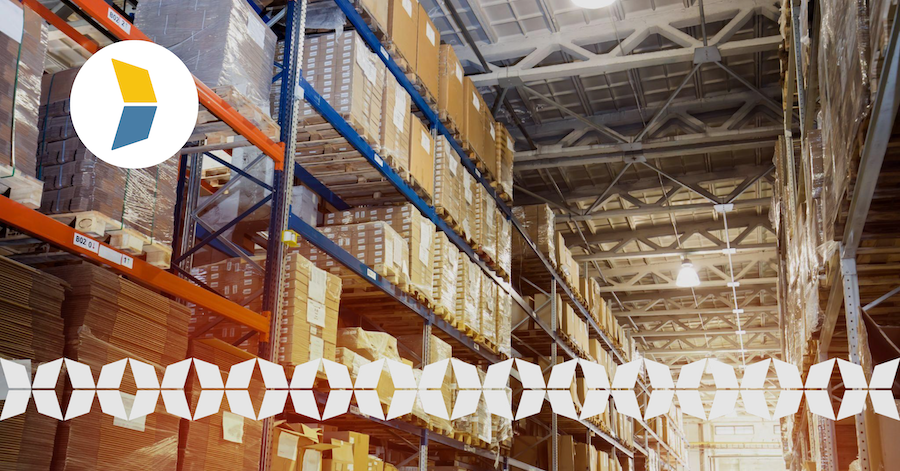Talking about logistics and fulfillment technology quickly becomes a game of alphabet soup. With so many acronyms thrown around that have overlapping meanings and functions, it’s not surprising that many eCommerce brands struggle to understand which features and capabilities are most relevant to their needs.
That’s why Kase is going to sort out the differences between OMS, WMS, and TMS, their specific use cases, and how to figure out which technology you should be looking for in your fulfillment provider.
WMS, OMS, and TMS compared
What is an OMS?
An OMS or Order Management system is a technology platform tasked with managing the end-to-end movement of orders through the fulfillment process, from checking available inventory, order processing, routing to a facility, picking and packaging, and shipping to the end customer. At a glance, an OMS can tell an eCommerce business how many outstanding orders there are, which orders are awaiting shipping, and how many have already been shipped. In sum, the order management process provides a single source of truth for businesses to understand their current order volumes and also track sales trends/seasonality over time.
What does an OMS do?
- Manages order capture and processing when orders are placed on any of your sales channels, such as your eCommerce store, apps, or third-party marketplaces.
- Provides real-time visibility into inventory levels across multiple locations, which helps to avoid stockouts
- Routes orders to the optimum fulfillment location by taking into account factors like inventory availability, order fulfillment timeframe, and distance to the customer.
- Tracking orders and shipments throughout the fulfillment and shipping process and providing order updates to customers.
What is a WMS?
A Warehouse Management System (WMS) coordinates the movement of inventory, labor, and fulfillment activities around a warehouse. A WMS ensures that inventory levels and stock availability can be tracked accurately in real-time, that picking and packing are efficient, and that warehouse space is maximized. In short, it’s a barometer that monitors the overall efficiency of your fulfillment operation, helping businesses to identify pain points or slowdowns that are increasing fulfillment costs or lengthening fulfillment timeframes.
What does a WMS do?
- Receiving fresh shipments of inventory and choosing appropriate storage locations.
- Tracking the movement and storage of inventory in a fulfillment center to balance inventory levels and set appropriate reorder points.
- Assigning tasks such as picking orders, replenishing inventory, or processing returns.
- Sets picking and packing workflows for warehouse staff, including setting the most efficient walking routes around the warehouse to speed up pick times.
- Optimize warehouse layout and storage space according to the amount and type of goods being stored
What is a TMS?
Where a WMS and OMS are more concerned with end-to-end fulfillment workflows, Transport Management Systems are designed primarily to plan and coordinate the movement of customer orders from the warehouse to the point of delivery. This includes vehicle management, route optimization, real-time tracking, delivery performance, and more. The purpose of the transport management system is to ensure that customer orders are being shipped and delivered in the most streamlined way possible, balancing speed and cost in ways that ensure a positive delivery outcome for the customer.
What does a TMS do?
- Selecting parcel carriers according to cost, speed, and service level.
- Sets delivery routes to reduce transportation costs and transit times.
- Tracks shipments of customer orders to help businesses manage delivery expectations.
- Manages the payment and invoicing of freight services and invoices.
Where do OMS/WMS/TMS overlap?
This is where fulfillment technology can get complicated for eCommerce brands. While all of the above systems represent standalone systems, there are some key features that they have in common:
Integration capabilities. OMS, WMS, and TMS can all integrate with other enterprise systems such as the ERP system (Enterprise Resource Planning) or CRM (Customer Relationship Management) systems to provide a holistic approach to logistics management.
Real-time Visibility. These systems all provide real-time visibility into different aspects of the supply chain, such as inventory management, shipping operations, order management, and labor management.
Optimization. The whole purpose of WMS, OMS, and TMS systems is to optimize different aspects of your fulfillment operation and enable you to make data-driven decisions. This means there are areas where the capabilities of existing systems will overlap, such as inventory tracking, processing orders, and warehouse operations.
Plus, some tech stacks also offer a mix of these capabilities within one technology solution for ease of integration and management.
A hybrid OMS/WMS, for instance, offers order management across channels and granular oversight of warehouse activities. When orders come in OMS/WMS can process those orders, allocate them to the appropriate warehouse, generate the picking list, and guide associates through the fulfillment process.
Likewise, a TMS may share real-time tracking capabilities with an Order Management System. By using both systems, an eCommerce business gets end-to-end visibility over the movement of orders from placement through to delivery, making it easier to pick up on inefficiencies as they occur throughout the fulfillment and shipping process.
What technology systems should my 3PL be using?
While this hybridization is convenient, the increasing overlap can make it difficult for brands to understand exactly what they are getting with different solutions—or how a 3PL’s proprietary fulfillment technology may fulfill certain requirements, but not cater to other functions that may need to be plugged with other solutions.
What are your key business goals?
Your business objectives will shape not only the 3PL partnership that’s most appropriate for your brand, but also the kind of technology you need to leverage. For example, if optimizing shipping costs and performance is a key priority, a Transportation Management System can offer features such as rate shopping and shipment tracking that make transportation operations more efficient. Finding a 3PL that offers these capabilities – either in-house or via an integration with transportation management systems – is essential to achieving this goal.
Do you want to bring your technology, or use your 3PLs?
If your fulfillment operation is already using WMS software or an Order Management System, you need to decide whether you want to bring your tech stack with you or take the opportunity to move to other systems when you partner with a 3PL. Some 3PLs will require brands to use their in-house order management systems, which adds additional steps to the onboarding process. If this is the case, it’s important to vet a potential 3PL closely to check that its proprietary systems align with your needs.
What customer experience are you hoping to create?
Customer satisfaction is a key consideration when it comes to planning out your fulfillment operation. Closely monitoring customer behavior will help eCommerce brands understand what performance KPIs they need to prioritize in order to deliver experiences that lead to repeat purchases. If customer demands for rapid delivery or real-time visibility over orders are straining your current capabilities, this indicates where your business should be allocating resources to technology solutions.
The case for tech in an eCommerce 3PL fulfillment partnership
Identify inefficiencies, streamline, repeat
Being able to automate many of the day-to-day operations in an eCommerce operation helps to reduce manual errors and speed up processes that often become bottlenecked due to delays in transmitting information between systems, such as order processing, pick list generation, shipment tracking, and more. Automating these functions and tracking their efficiency provides a consistent feedback loop for continuous improvement in your fulfillment partner’s facilities.
Know what to do with all that data
Supply chain management solutions are rich sources of data on everything from inventory accuracy to order picking times in a specific warehouse. However, knowing how to extract these insights and create the appropriate plan of action separates a value-added 3PL partnership from a mere logistics provider.
Faster fulfillment = happier customers
A fulfillment partner who invests in their capabilities is also investing in yours; the right system that supports your business’s growth and enables better management of your fulfillment operation is essential to maintaining positive customer experiences that promote satisfaction and trust in your brand.


